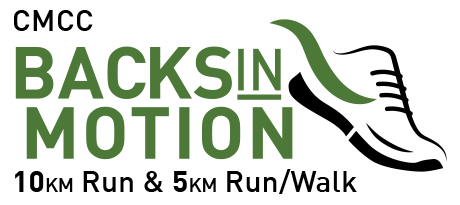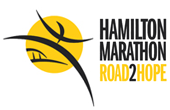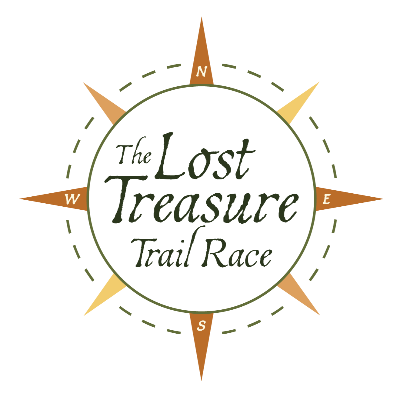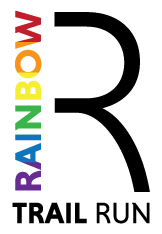Race: Road 2 Hope Marathon, Hamilton
When: November 7, 2010.
Something wonderful happened this year in the Pickering/Ajax/Whitby area: the opening of the Ajax Running Free store in old Pickering Village. The store has already made a positive impact on the running establishment. The evidence is none plainer than the results of the Hamilton Marathon, where almost everyone who ran with Ajax Running Free earned a new PB or had their best result in years.
Last February I started doing my Saturday runs out of Ajax RF, mainly because their training routes covered the same terrain as the W-I-N Marathon. For once, I had running pals who could keep my pace honest. It seemed everyone had game. The results from those spring races that we were training for, Around the Bay, Boston, Mississauga, W-I-N, were noticed. Soon some of Durham’s finest (and many more) were going out for runs from the store. It was at this time I joined up with John Tranter and Jeff Fyfe, to take a crack at Hamilton in the fall, with a goal time of 2:50.
I understand very well why all those runners did so well this year. It goes back to one of the most basic of training principles, one that I had long overlooked since I first started running: The hard-easy rule. Every hard day of training must be followed by an easy day for recovery. Regardless where you are in the pecking order, from beginner to elite, the hard-easy rule applies to all. Easy days are under 70% of your max heart rate and no more than 10% of total weekly mileage. Hard days are over 80% of your max heart rate OR longer than about 20% of your total weekly. And don’t mess with the in between; it just isn’t worth the effort and leads to mediocre results.
For more info on hard-easy training check out: Team Oregon, Marathoning Start to Finish, Team Oregon Training Manual
This is why Ajax Running Free did so well with their programme: Saturday long run (hard), Tuesday tempo run (hard), Thursday track (hard). If you just showed up at the Ajax store for those days, and took the others easy, you had it made! The programme, as Garth Boucher insists, will continue right through this winter and into next season. It is a perfect formula for success, and he is very right not to mess with it. You can count on seeing me there next year.
I had not done Hamilton, but Jeff Fyfe had. During many of our training runs, we talked about how we were going to tackle the course, and we came up with this simple game plan: Run the first half no faster than 4:00 minutes per km; get into the Red Hill (long downhill section) then take stock; use the hill either for recovery or pace by heart rate; once out of the Red Hill Express, try to hold on to 4:00 minute km’s for as long as possible; and if we still had energy push the pace home for a two-forty-something.
Between John, Jeff and myself, our test races indicated we had the POTENTIAL to run 2:46 or 2:47, although I believe any of us would have been over the moon with a 2:48. I also had Mike Bosch’s time from Mississauga (2:48:30) committed to memory. Most pace charts that predict marathon times include the following caveat: “With adequate training” but what that might be is anyone’s opinion. After more than 12 weeks at 100 km plus, and six 42 km long runs over the last 8 weeks, I was certain I had done it.***
*** with fantastic support from Dr. Jeremy Barchman at Dynamic Balance Chiropractic, Ajax. Thanks, Jeremy! Dynamic Balance Website
Race day started with a BIG CONUNDRUM: Shorts or leggings? It was about 4C at the start and I just couldn’t make up my mind. I went for my warm-up in my leggings and returned totally hot. With no time to waste, I changed into my shorts in front of some ladies inside the school and hit the start line with less than a minute to spare. My Dad was my personal Sherpa, driving my car and bag back to the finish. If not for him, my bag would have already been checked in, and I would have been cooked. Literally!
John Tranter, Jeff Fyfe, Ryan Babcock, Kevin Meaney, myself and others set off right on our planned pace of 4:00/k. The first 10k went by on pace as expected. The next 4k south to the turnaround required some work, but once we were headed back toward the escarpment and the Red Hill, the required effort eased off a bit. Nonetheless, Jeff was telling me to cool it, the 3:50 and 3:55 at 18k and 19k a bit on the fast side. Looking back, this was not the place for this pace and it is one small detail to fix for next time – the Red Hill can be used to catch up. We had also lost Johnny somewhere around the 15k mark, and as we dipped into the Red Hill Express, right on our goal pace, we remained confident that we would see him again.
As my Dad warned, the first 500 m into the Red Hill is relatively steep. To save our quads we took it very easy until the gentler slope arrived. In the end, we used the hill to build a small cushion of time although it was tempting to really open it up. We made a wise choice. We had talked about taking whatever pace that would keep our heart rate level. However that stretch of 135 bpm instead of 152 bpm was welcome after the effort to keep the top half on pace. And at the end of the Expressway section (about 29k and still going downward) my heart rate had already returned to the 150’s – the honeymoon was over and the marathon just beginning!
The climb out of the Red Hill took some effort and I lost Jeff in the process. At 30k I synched my Garmin to the marker: 1:58:20, well ahead of pace, or so it seemed. This was fantastic news, which I needed mentally, and it cemented my strategy for the last 12k: knock down as many more km’s as close to 4 minutes as possible and keep Jeff in view. The next five km went as planned until the turn back onto the waterfront trail, about 7k to the finish line. My heart rate had climbed well above 160 bpm, and I needed to ration my energy to get to the finish. So I backed off my pace and my HR settled in the high 150’s, confident that a two-forty-eight was in the books. That quickly changed to a sub-two-fifty, with plans to reopen the throttle at the 40k marker. The end was near (so we all thought) but when 40k finally arrived, there was nothing left.
The route up to that point had been fantastic, with a nice variety of terrain. We hit the 41k marker and the anticipation of the finish lifted my feet and hopes. We had already passed below the finish line and could hear the announcements. A right turn off the paved waterfront trail brought us onto – what was this? – a very loose narrow gravel path. This was torture and it sucked the last bit of energy out of me. Then, another right turn off that nasty path and onto – who planned this bit anyway? – an uphill climb toward the finish which was still not in view. It felt as if all hope of a two-forty-something was lost, and I was confounded. Where was that forsaken finish line?
A common question, so I would find out later. Yes, the course distance was certified. But the marker placement had slipped up somewhere: at the 30k my Garmin read 29.75. That resulted in an extra 250 m (or more) wedged between the last 41k marker and the finish line. An extra minute we were not mentally prepared for. So a gentle note to all marathon race directors: Be a sweety and measure BACKWARD from the finish. The last 10k of markers must be accurate. And one more suggestion: How about a split time at the half?
Looking back on my preparation and race strategy, there is not much I could do better. For race strategy, don’t worry if you fall behind a touch on the top half, you can use the Red Hill to catch up. I think burning too much at the top will cost more at the bottom; Hamilton should be an even or negative split. I will also pay closer attention to my carbohydrate loading, as I ran out of energy too soon. I ate a lot of pasta, but perhaps did not drink enough water to convert it all to gylcogen (remember 1 part pasta, 4 parts water by weight). I will also favour more rice, as it packs more carbs, gram for gram, than pasta. And lastly, gels. The four I took over the race, likely not enough. I recently read that elites take gels every 3k or 4k (not enough gels was the undoing of Simon Bairu in his marathon debut), so I will be carrying 7 or 8 gels next marathon.
As for Johnny Jogger, it turns out he got a bad calf cramp around 14k. He walked it off, got some water and carried on. Came in thinking he had a 3h in the bag, but had to settle for a 3:01 on account of those markers. Never count this guy out! And as for the rest of the Ajax Running Free group, a quick survey indicates over 70% of our runners set a new PB, averaging over 9 minutes better than their previous best. These are simply huge improvements!
Congratulations to all Ajax Running Free runners (see below for a partial list), and a special thanks to proud owners Garth Boucher and Steve Okrant. It was simply great to see the Durham region so well represented.
Jeff Fyfe*, Daniel MacKinnon*, Kevin Meaney*, Ryan Babcock*, John Tranter, John Gardener*, Aaron Putman*, Ross Chandler*, Erin King*, Cheri Mobray*, Colin Arnott, Garth Boucher*, Samantha Joseph, Paul Brazeau*, Steve Okrant, Mindy Fleming*, Daniel Cross, Cathy Putman*, Jeremy Barchman, Megan Fyfe*, and many more.
* = PB




















